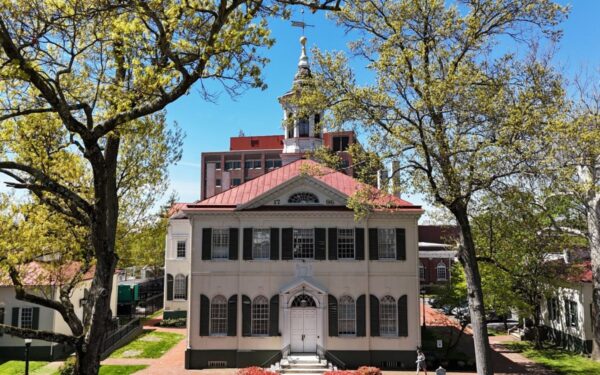
Burlington County was established in the Province of West Jersey on May 17, 1694 and named after Bridlington (or Burlington), England. Stretching from the west by the Delaware River and the mouth of the Great Bay in the Atlantic Ocean and the Mullica River to the southeast and south, Burlington County is the largest county in the state of New Jersey. The city of Burlington was settled by Quakers in 1677 and was the capital of the West Jersey colony from 1681 until it was alternated as provincial capital of New Jersey with Perth Amboy from 1702 to 1790. Mount Holly is the county seat, another Quaker settlement.
Burlington County is steeped in history. The following is just a taste of what’s in store for you in Burlington County. In May 1778, Bordentown was attacked by British forces during the American Revolution and was along the path of the British troops as they marched across New Jersey and encountered the Continental army at Monmouth Courthouse. Burlington was among the three major Underground Railroad routes in South Jersey – Station A, a connection from Camden to Burlington and from Bordentown to Princeton; Station B, a connection from Woodbury to Mouth Laurel; and Station C, a connection from Greenwich to Swedesboro, then on to Mount Holly. By 1790, Burlington County had the largest free Black population which can be attributed to its location in the Delaware Valley known as the ‘cradle of emancipation.’ The Burlington Pharmacy was a Quaker owned building that was used to harbor runaway slaves and held anti-slavery rallies. Located in Burlington City, it is the state’s oldest pharmacy in continuous operation. Batsto Village is a restoration of an eighteenth and nineteenth century iron-making village. By the late 1800s, Burlington was harvesting half of the nation’s cranberries, and it is here where the first highbush blueberry was cultivated at Historic Whitesbog Village. Cranberries remain one of the county’s primary crops while corn, barley, and soybeans are also grown.
Today, Burlington County stretches 820 square miles dotted by forests, farmland, rivers, streams, and wetlands. Explore all that Burlington County and the surrounding region as to offer for a glimpse of the valuable contributions to not only New Jersey, but also to American History. With so much history and architecture to be explored, where will you start first?

Contact us at